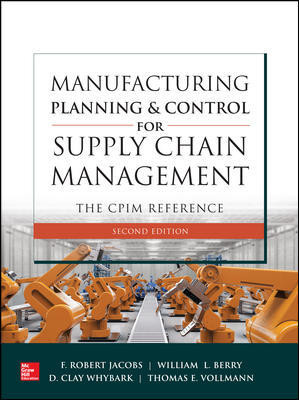Quality Web Exclusive
How to Create a Culture of Quality Across the Supply Chain

Shane Allen, Supplier Development Engineer at Uponor, knew something needed to change, and fast.
Everyone recognized their outdated quality management systems were slowing them down. But ultimately, it was the production part approval process (PPAP) that really drove it home for Allen how extensive the problem had become.
PPAP requires suppliers to submit a standardized set of documents to prove that materials are meeting Uponor's standards. Although initially an automotive standard, PPAP is increasingly used across many industries, and if your company uses outside suppliers you probably have a similar process.
Up until 2018, to complete just one PPAP for one supplier component, Allen had to switch back and forth between at least eight separate software systems. These included a 10 year old custom on-premise system, a spreadsheet tracker, email, Adobe Acrobat, Minitab, another spreadsheet tracker, Sharepoint, and a separate inventory management system.
All information was siloed, and data had to be manually inputted at least three times during the process. It was needlessly time consuming, prone to manual error, and was inconsistent with how seriously Uponor takes supplier quality.
“Like many processes, our part approval process had been built up over the years by different managers at different times, all with different goals,” Allen reflected. “We had worked ourselves into a situation we couldn’t get out of. We needed somebody to help us get out of this box.”
Modern Business Realities Strain Outdated Management Systems
If you’ve ever managed suppliers, I’m sure this situation sounds very familiar. At most companies today across regulated industries, supplier quality management processes resemble the cobbled together mix of on-premise software, email, and even paper files that Uponor’s quality team struggled against to complete their work.
In today’s global market, companies rely on diverse suppliers, vendors, and contract manufacturers to fulfill their business goals. What often results is supplier inconsistency and ineffective communication, which makes it hard to effectively control documents and manage quality.
Traditional supplier quality management (SQM) systems are not fit for today’s changing and complex business needs. With often dozens, or even hundreds of suppliers, these legacy systems become difficult and time consuming to manage and report against, making visibility, consistency, and control nearly impossible.
This common yet regrettable situation explains why LNS Research projects modern quality management system adoption to grow “at 27% year-over-year, with some favorable tailwinds in 2019” and expects “for the quality leaders, these changes mean easier and better options that drive more awareness and improved outcomes.”
In the following sections we’ll explore Uponor's journey to select and adopt a modern QMS and document control solution and the improvements they have realized as a result.
How Uponor Untangled and Streamlined Quality Management
In 2018, Ryan Fleser, Uponor’s Director of Quality, Allen, and the rest of the quality team recognized they’d come to a critical juncture in their pursuit of process efficiency to drive growth in the overall business.
After evaluating their current quality management processes and systems, they counted no less than 14 separate systems. Like with the PPAP example, most of these systems were antiquated, on-premise solutions that lacked the collaboration capabilities the team knew were slowing them down. It was past time to modernize, simplify, and unify how they managed quality, with an emphasis on supplier quality management.
“We spent a year in the solution selection process: defining project scope and requirements, generating a long list of candidates, pruning the long list down to a short list, grading the shortlist against requirements, demoing the short list with stakeholders, then finally selecting the solution,” shared Allen.
“We looked at configurable solutions as well as more out-of-the-box, you-get-what-you-get choices, and graded them on our wants and needs such as integration with Oracle, built in reporting, possibility for supplier users,” Allen recalled, “and how well they could take on all the different activities our homebrewed software did, and, of course, price.”
After this thorough evaluation process, Uponor selected Veeva QualityOne, a unified, cloud-based Quality Management System (QMS) and document control solution. Now the real work could begin - untangling and simplifying processes that had built up over decades.
Guided by Veeva’s implementation experts, Uponor conducted a thorough audit of each quality process to understand their starting point. “On our end, the exercise of sitting with each business unit and getting them to clearly state what each process is exactly is enormously eye opening in exposing gaps,” Allen recalled. Only after this exercise could Uponor and Veeva streamline the processes and apply the latest quality management best practices.
Technology Enabling a Culture of Quality
The first rollout phase for Uponor’s new, unified solution began with supplier quality management and is expected to go live this spring. Uponor is also considering a global expansion based on early results.
Initial testing and early adopter pilots have already enabled internal stakeholders like warehouse staff and additional engineering departments to access and address relevant records such as non-conforming material reports and correspondence in real-time, reducing unnecessary back and forth communication.
In the next phase of the rollout, Uponor is anticipating the same gains and more when bringing supplier personnel into the shared system.
“By having suppliers access the platform and fill out their own required documents - there’ll be no more back and forth over emails. They’ll just get it done,” said Allen. “The new system will also allow suppliers to answer corrective actions and deviation requests directly, in their own words.”
From the supplier’s perspective, a shared platform for collaborating on records and documents tied to standardized workflows is becoming the industry standard because of the increased business process efficiency. Accessing the platform through a web browser enables them to also focus on revenue generating activities rather than administrative ones.
Allowing suppliers to collaborate in real time with quality records is only one of the significant changes that are now possible with a QMS upgrade to cloud technology. It has also freed up the team to securely do their work wherever is convenient.
“With a cloud-based system, we also have mobile access,” said Allen. “Now, I can take photos and update it directly to the record while I’m on the shop floor, which improves workflow responses and efficiency.”
As for the PPAP process that so frustrated Allen in the past? They’ve already reduced old processes that involved over eight systems down to Veeva QualityOne, the inventory management system, and one spreadsheet, with plans to eliminate the spreadsheet in the next rollout phase.
Looking for a reprint of this article?
From high-res PDFs to custom plaques, order your copy today!








